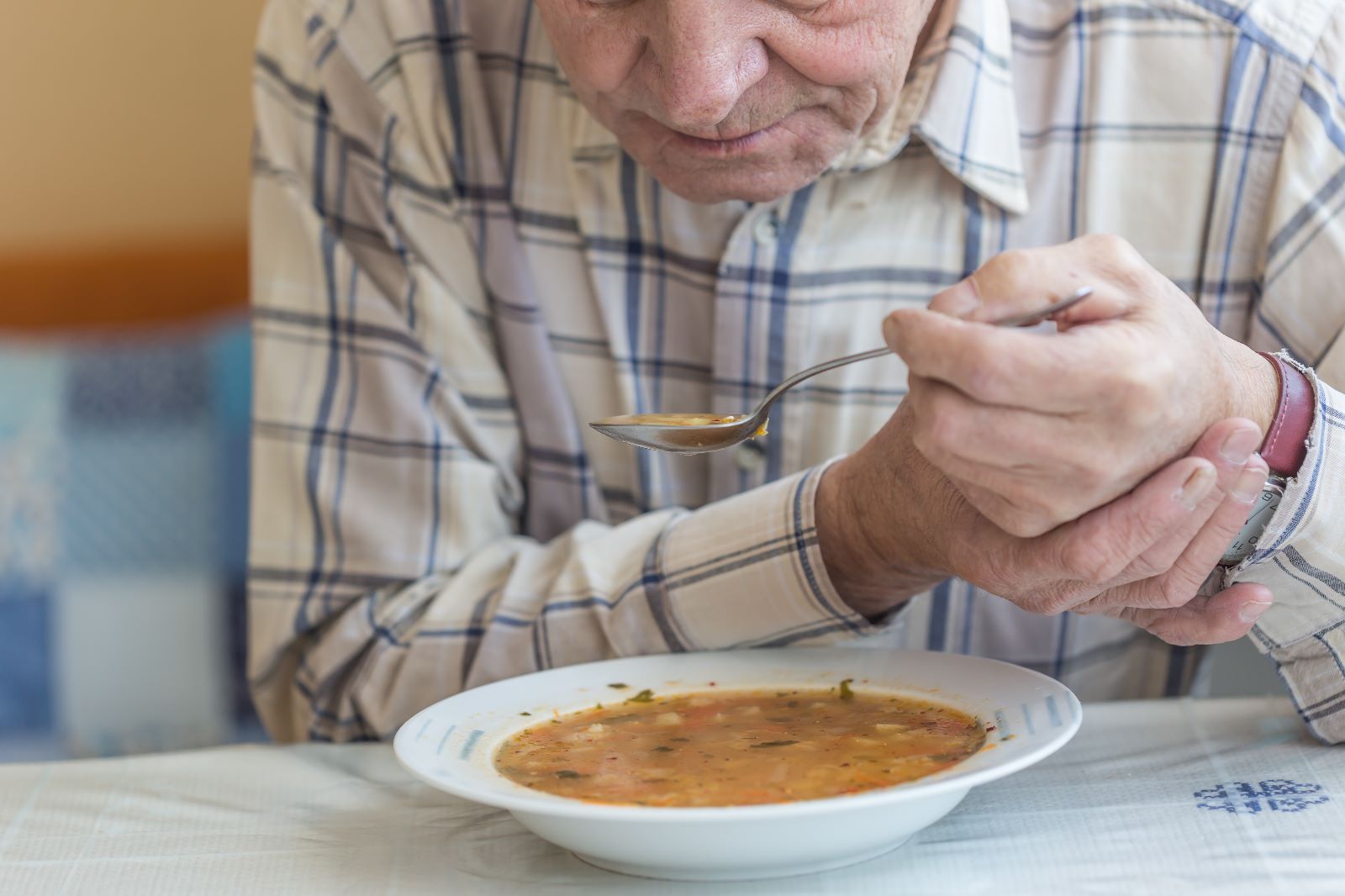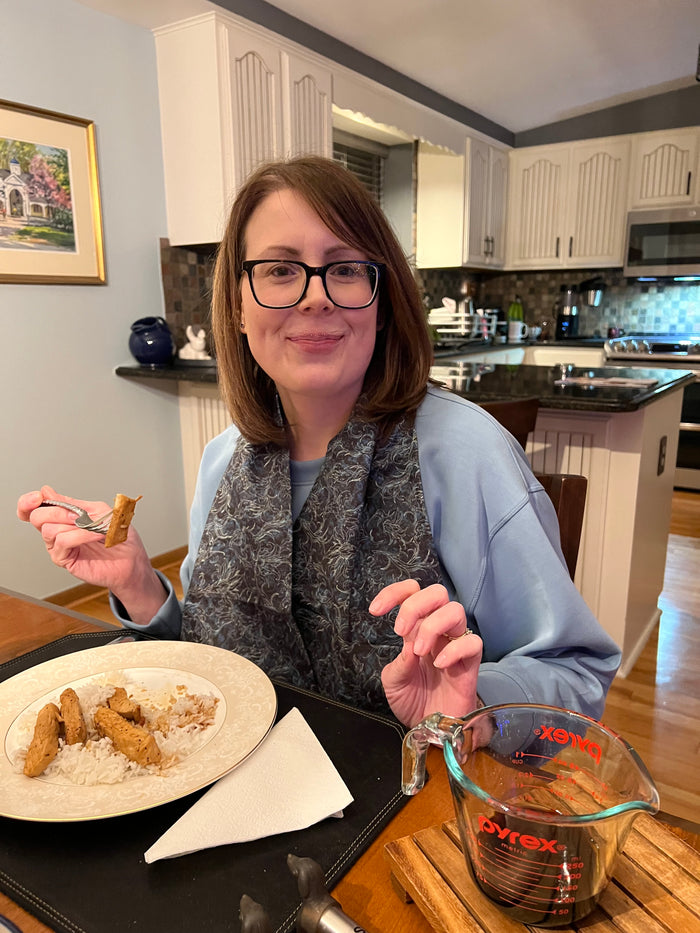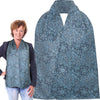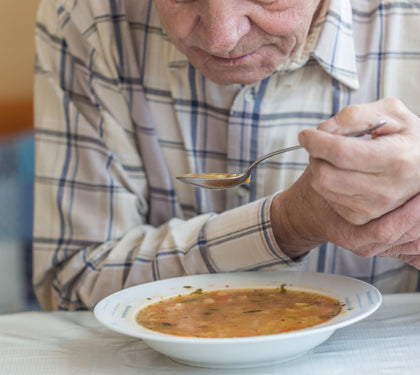My mother always loved her food (who doesn’t?), but in recent years, her appetite declined and, when she did feel like eating, she struggled with essential tremors that made mealtime frustrating. Eating with shaky hands can be a challenging and embarrassing experience, but as her caregiver, I learned some practical strategies that made mealtime more comfortable and enjoyable for her.
One of the biggest challenges my mother faced was difficulty holding utensils, especially when they were small or lightweight. I discovered that using weighted utensils helped to stabilize her hands and reduce shakiness. Larger-handled utensils were also helpful in providing her with a better grip.

We also found that using plates and dishes designed to make dining easier made a big difference. High-rimmed plates (search scoop plates) and bowls helped to prevent food from spilling over the edges, and non-slip placemats and trays can keep dishes in place. My mom was an arm-chair eater and preferred the cheap plastic dishes commonly sold for kids at Walmart or Target (although there are definitely advantages to a heavier plate). Light or heavy - lipped plates make a huge difference.

On days when Mom’s tremors were particularly severe, we used Design to Dine’s adjustable bibs. I loved these because I could simply slide the bib over her head and adjust it from the front rather than reaching behind her head. They provide full, waterproof coverage with a crumb catcher. Most of the time, however, she just grabbed her dining scarf from her bedside table drawer and that was a sufficient barrier to keep her clothes clean and dry.

Stabilizing my mother's arms and hands was also helpful in reducing shakiness. When shopping for a new recliner, armrests were actually our top criteria. She needed a chair with substantial and firm armrests: not only to stabilize her arms while eating but also to help her push up when exiting the chair. We also utilized a good lap tray with a rim around the edges and non-slip surface when I knew the meal was particularly risky (think tomato soup).

As her caregiver, it was important for me to be patient and understanding when helping my mother with mealtime. While it often was tempting to just feed her on her really bad days, offering assistance with utensils, plates, or positioning was a much better solution for reducing her frustration and allowed her to eat independently.
Finally, seeking professional advice from an occupational therapist or other healthcare provider can provide additional support and resources for managing tremors or shaky hands during mealtime. Frustration = Fighting (at least in our house) and having the right tools at our disposal made Mom’s final months a lot more pleasant for both of us.
In conclusion, eating with tremors or shaky hands can be challenging, but there are practical strategies to help manage mealtime challenges. Whether it's using adaptive utensils, choosing the right plates and dishes, or using an adult bib scarf, there are solutions that can make mealtime more comfortable and enjoyable for your loved one. Remember to be patient, understanding, and seek professional advice when needed, and you can help make mealtime a more dignified and enjoyable experience for your loved one.










